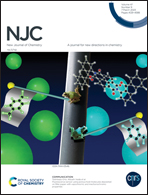Suppressing hydrogen bonds and controlling surface dipole: effective passivation for hydrophobic perovskite photoabsorber layers in solar cells†
Abstract
Perovskite passivation is instrumental for state-of-the-art perovskite solar cells; however, the passivation effect has not been understood in detail. Herein, wettability measurements with selected solutions reveal that passivation is crucial to suppress hydrogen bonds for hydrophobic perovskite surfaces, advocating a novel strategy to render perovskite hydrophobic efficiently.



 Please wait while we load your content...
Please wait while we load your content...